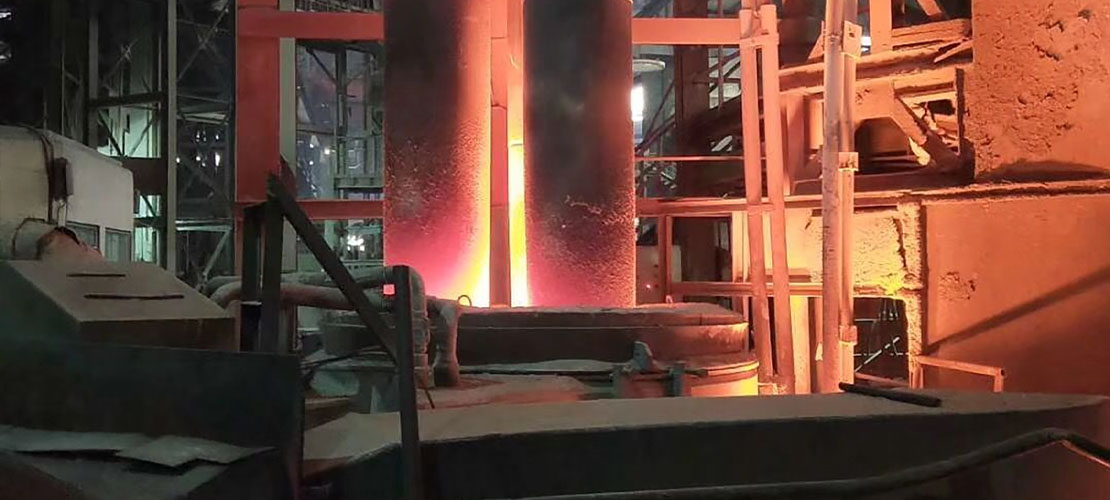Nov. 04, 2025

Argon blowing in a ladle is widely used in the steel industry. Countries such as the United States, the Soviet Union, France, Japan, the United Kingdom, Canada, Czechoslovakia, and Poland conducted extensive experimental research in the 1960s.
Argon blowing in a ladle utilizes the properties of argon, an inert gas, to treat molten steel. Argon accounts for 1% of air, with a specific gravity of 1.78 kg/m³ (air's is 1.29), and can be liquefied at -185℃. Argon is a byproduct of oxygen production and is readily available. Argon is blown into the molten steel through a permeable element at the bottom of the ladle. The argon forms numerous small bubbles in the molten steel. These bubbles act as a vacuum chamber relative to harmful gases in the molten steel. As the argon bubbles rise, hydrogen, nitrogen, and oxygen (CO) are carried to the surface of the molten steel, thus achieving degassing. In addition, the rising argon bubbles also agitate the molten steel. The presence of argon bubbles provides opportunities for gas-phase nucleation and intensifies collisions of inclusion particles, thus facilitating the removal of gases and inclusions.
The specific functions of argon are as follows:
① It has foaming and gas-washing effects, reducing [N] and [H], and further reducing [O];
② It has a stirring effect, removing slag and inclusions from molten steel, homogenizing the temperature and composition of the molten steel, and improving the yield of deoxidizers and alloys;
③ It has a protective effect, as the argon gas escaping from the molten steel covers the surface, preventing or reducing secondary oxidation of the steel.
For ladle argon blowing, appropriate blowing parameters should be selected according to the steel grade, the state of the molten steel, and the refining requirements.
Theoretical calculations and practical experience show that for low-carbon steel, if argon blowing treatment is used to achieve [O] ≤ 40 ppm, the argon blowing volume should be greater than 1.48 cubic meters/ton; if the purpose is to remove gases and inclusions, the argon consumption should be between 1.64 and 3.28 cubic meters/ton. If the purpose is simply to stir the molten steel, the argon blowing rate can be reduced. To improve the argon blowing refining effect, a low-pressure, high-flow-rate argon blowing operation can be used, which can be achieved by increasing the number of vent plugs or increasing the cross-sectional area of the vent plugs. The argon blowing time should not be too long, varying depending on the size of the ladle, generally between 7-15 minutes. Excessive argon blowing time will cause a drop in the temperature of the molten steel, increasing the incidence of non-metallic inclusions and spot-like inclusions. Insufficient argon blowing time will result in incomplete reaction, and non-metallic inclusions and gases cannot be effectively removed. Experience shows that the finer the argon bubbles, the more uniform their distribution in the molten steel, increasing the contact area with the molten steel, and resulting in a better argon refining effect.
Willing Pittsburgh Company and Union Carbide Corporation in the United States jointly developed a 200-ton argon blowing unit. This unit can process N-80 alloy steel and carbon steel, reducing [N] from 43 ppm to 32 ppm. If [O] is 180 ppm at the time of tapping, after 15 minutes of argon blowing, [O] is less than 15 ppm, achieving a deoxidation effect equivalent to vacuum treatment, improving the purity of the steel by 80-90%. Argon blowing treatment of ball bearing steel reduces [H] by 22% and halves the heat treatment time required to eliminate white spots in the steel. Using ladle argon blowing to treat electrical steel can completely eliminate the phenomenon of substandard silicon content, shorten smelting time by 40 minutes, reduce unit power consumption by 57 kWh/ton of steel, and increase electric furnace productivity by 10%.
Ladle argon blowing is not limited to blowing inert gas argon; it can also blow nitrogen, carbon dioxide, argon + carbon monoxide + carbon dioxide, argon + nitrogen, nitrogen + carbon monoxide + carbon dioxide, etc., and can also mix in some active gases depending on the purpose.
Previous: Oxygen Burner Energy-Saving Technology
Latest News
Oxygen Burner Energy-Saving Technology
Nov. 06, 2025
What is Argon Blowing in a Ladle? What are the Specific Functions of Argon?
Nov. 04, 2025
Latest Products
Customized metallurgical machinery and equipment range: Electric Arc Furnace, Submerged Arc Furnace, LF Refining Furnace, Vacuum Furnace, Induction Furnace, Dust Remove System, Water Treatment Equipment, etc. Providing the most advanced equipment integration services, metallurgical equipment can be customized according to different needs of customers, and production capacity can be adjusted according to customer requirements.
Electric Arc Furnace
Submerged Arc Furnace
LF Refining Furnace
VD / VOD Vacuum Refining Furnace
Induction Furnace
Furnace Accessories
Navigation
E-mail: anna@srfurnace.com
Tel: +86 159 2955 5868
WhatsApp: +86 159 2955 5868
Add:
Room 422, 4th Floor, Building D, No. 5, Phase I, Fengdong Free Trade Industrial Park, Xixian New District, Shaanxi Province
